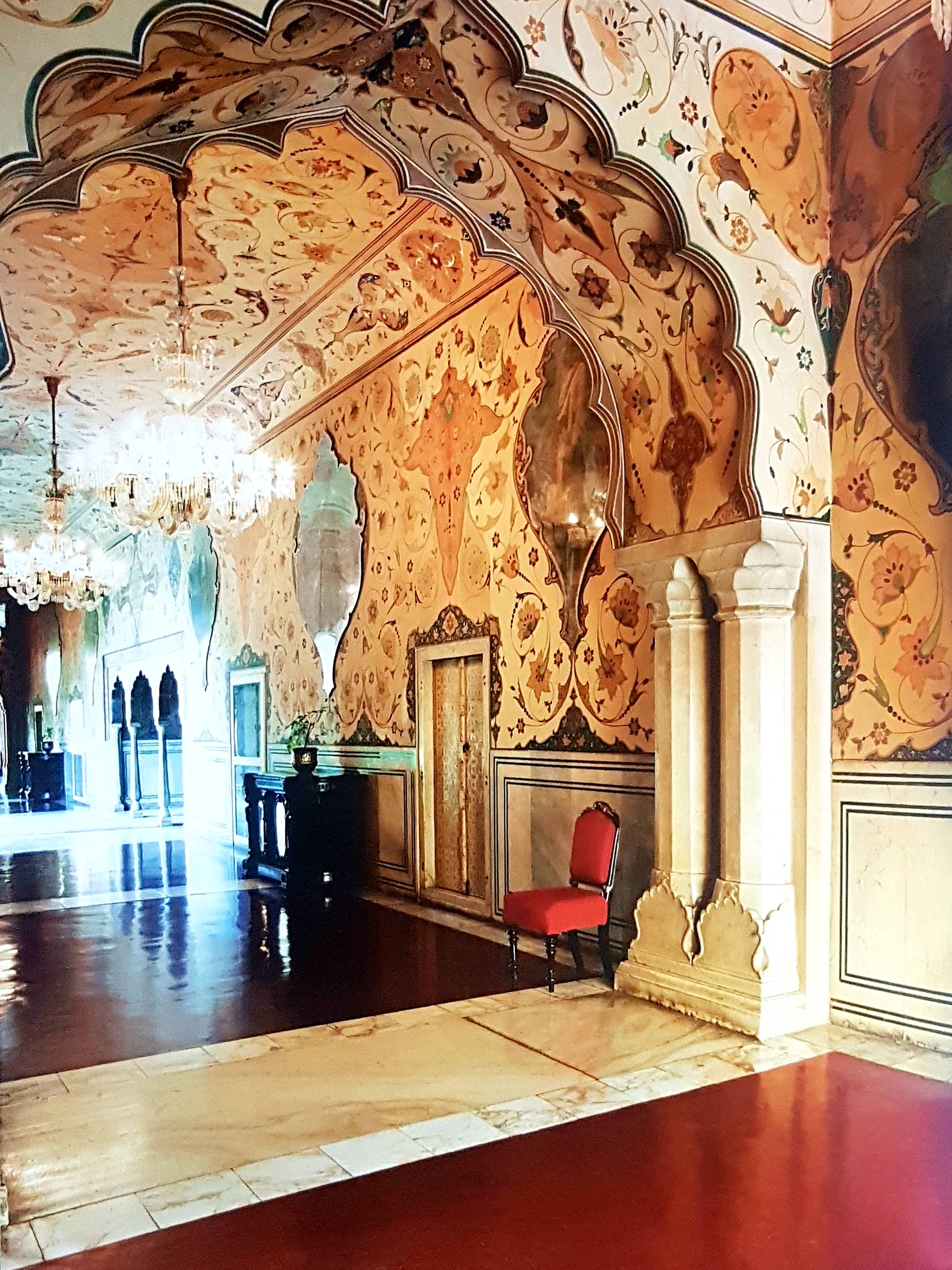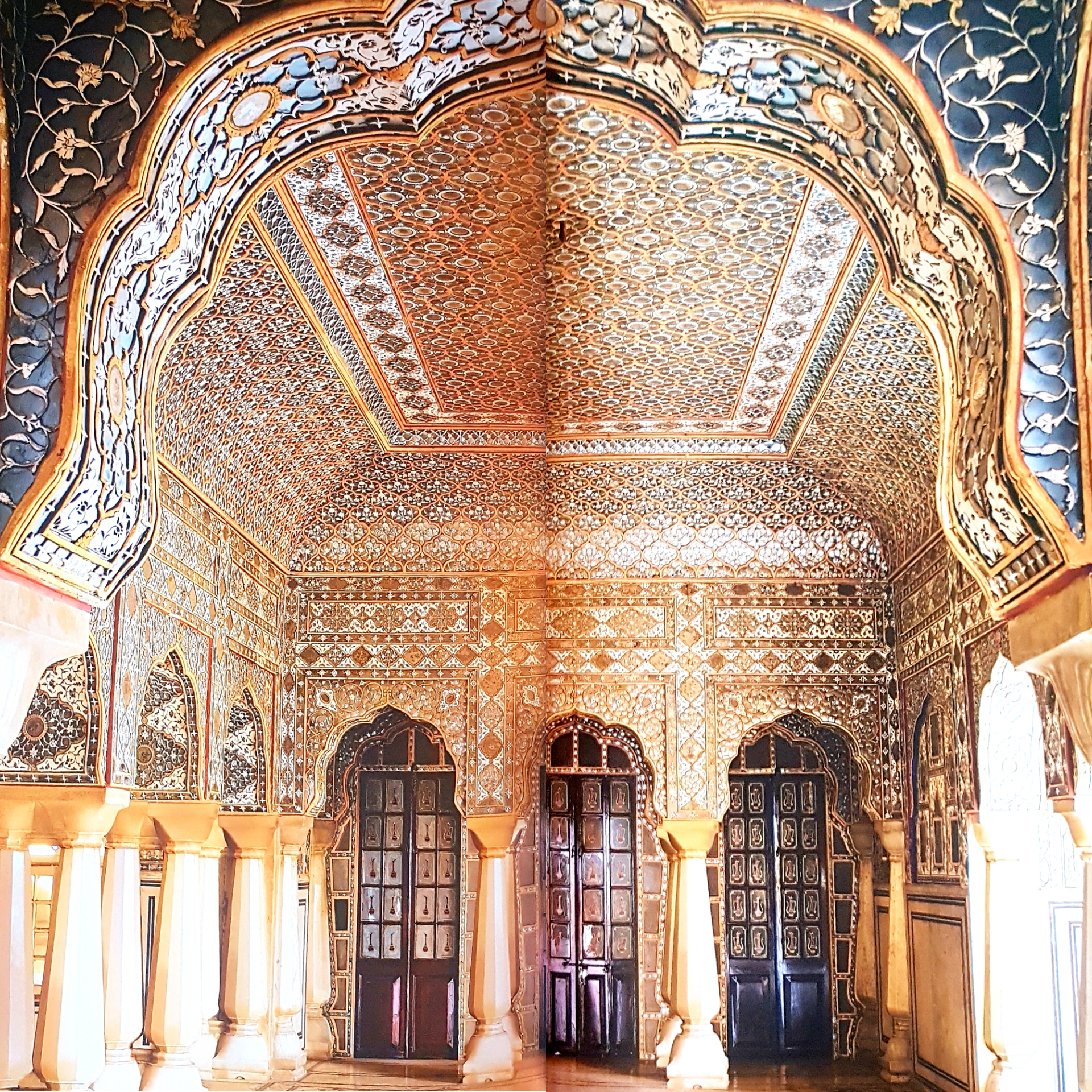Photos and text: “Royal Palaces of India”, Tarun Chopra
The City Palace, has been the residence of the Jaipur royal family since the 18h century. It is a complex, interspersed with courtyards and beautifully painted doorways and arches, which reflects the opulence and the political power of the Jaipur rulers. It was romantically decorated and luxuriously built with white Makrana marble and the typical eggshell plaster was used to finish its limestone walls.
Paintings executed in subtle hues of pink, blue, and beige mineral colours dominate the decoration of the palace. Shining brass and ivory doors and occasional semi-precious stone inlay work, together with solid silver furniture and hand-knotted Mughal design carpets with vegetable dyes decorate the living quarters. The architectural style is an amalgamation of Mughal and Hindu influences, though the latter dominates most of the decorative elements.
Today, one enters the City Palace from the eastern gate close to the Observatory. The entrance courtyard opens into Mubarak Mahal, which has now been turned into a textile museum. The building has a distinct style of architecture known as Indo-Saracenic. It was designed by the British architect Samuel Swinton Jacob using Indian influences. To the north of Mubarak Mahal lies the official entrance to the palace, which is a giant brass door that is guarded by two marble elephants. Originally, it housed the Naubat Khana, a place where drums were sounded each time the king left or returned to the palace, to signal women to shower the Maharaja with rose petals from the windows above the entrance.
After the main entrance comes the Diwan-i-Khas or the Hall of Public Audience, where courtiers used to gather to discuss court matters, deliver firmans (court orders), and administer justice. The major attraction of the Diwan-i-Khas is the two huge silver vessels, each weighing three hundred and fifty kilograms.
To the west of Diwan-i-Khas is a gateway called the Riddhi Siddhi Pol that leads to the inner courtyard with four richly decorated doors. The courtyard, in turn provides access to the Chandra Mahal, or the Moon Palace, which is the official residence of the royal family of Jaipur. It has a rectangular ground floor with a large veranda that is decorated with life-size portraits of the ex rulers of the city. The various floors of the Chandra Mahal have been named as Sukh Niwas (Abode of Comforts), Rang Mandir (Pleasure Palace), Shobha Niwas (House of Décor), Chavvi Niwas (Mirror Palace), and Mukut Niwas (Abode of Crown).
Opposite to Chandra Mahal is Badal Mahal with its square water tank called Talkatora. Floored with marble and glazed with tiles, is the romantic pool called Pritam Niwas, or Abode of the Beloved. The City Palace was partly converted into a museum in 1959. It houses many royal treasures: crystal chandeliers, pashmina rugs illustrated manuscripts, and jewelled weapons, which are beautifully displayed in various sections of the palace.






autumn and is dedicated to Lord Vishnu.
